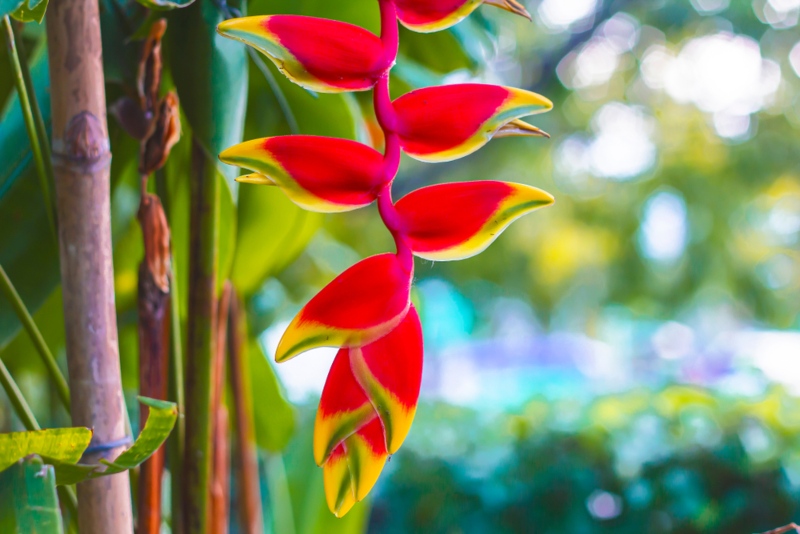
The lobster claw plant, officially Heliconia rostrata, is an amazing tropical plant that has bright red bracts, modified leaves, in the shape of lobster claws. It grows small flowers, but those are rarely noticed next to the brightly colored leaves. It can be grown in zones 10 through 13. In nature in tropical areas, this plant can get as tall as 15′. However, in yards, they usually get to about 3′ to 6′. The bracts are paddle-shaped with pale green outlining the bright red.
![]()
Light and Temperature Requirements
The lobster claw plant will thrive in both full sunlight and in partial shade. These are rainforest plants, so they need heat and humidity. They will not tolerate cold temperatures outdoors, but you can grow them in containers indoors if they get enough sun and are watered often. Outdoors, it will die if there is frost. If the temperatures drops to 50 degrees, this can harm the plant, and you will need to bring it inside.
Watering

Because of its rainforest origins, the soil should be kept moist to duplicate those conditions. It needs to be watered often if you don’t get much rainfall. It is helpful to place a 2″ layer of mulch around the lobster claw plant’s base to help hold moisture in the soil. They are not drought-tolerant. They are also not salt-tolerant, so they should not be planted near the ocean. If this plant doesn’t get enough water, the leaves will turn brown. In the winter, water them with tepid water.

Soil and Fertilizing
The lobster claw plant needs a very rich soil that is full of nutrition. Using some potting soil that is peat-based is helpful. You can mix it into the outside soil before planting there or fill your container with it. While the soil does need to be fertile, it also has to drain well. The potting soil that you choose should have excellent drainage. The soil should also be slightly acidic for the best results. If the soil is too alkaline, it may develop an iron deficiency, and its leaves can turn white or yellow.
During the growing season, giving it a treatment of a liquid fertilizer every once in a while can help it to be strong and healthy. When the winter comes, only fertilize it about once per month throughout the season.
Deadheading and Pruning
![]()
There is usually no reason to prune a lobster claw plant. It can be deadheaded, though. If you see any parts of the plant that look diseased, dead or damaged, clip them off. After the flowers grow and the flowers have died, you can cut off the stems they grew on, as they won’t be growing back.
Propagation
The lobster claw plant grows through its rhizomes. These are underground shoots that you can break apart and plant to begin a new lobster claw plant. If you leave the rhizomes alone, they will develop into new plants next to the original plant. But if you want to grow a new plant elsewhere, divide the rhizomes so that each one of them has an eye. Clean the rhizome in water and cut it down to 1′ in length if it is larger. Then, plant it in a container of rich potting soil so that the eye is close to the soil’s surface. Water often so that the soil is always moist. Keep it in the shade until it begins to sprout, then move it to full sun or partial shade.




 ?. ts.dhung.
?. ts.dhung.
